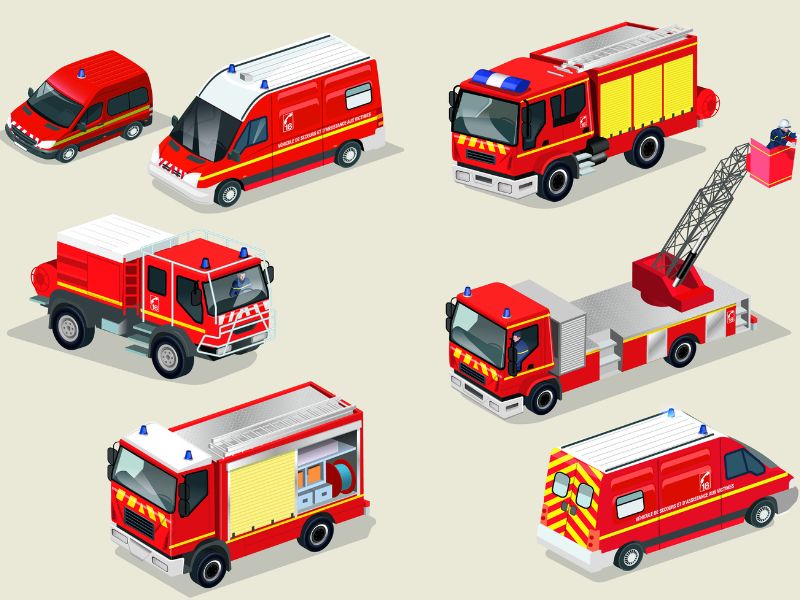
Fire Brigade vehicles: a detailed analysis
An Overview of Emergency Vehicles
The Fire Brigade is equipped with a wide array of specialized vehicles capable of handling various emergency situations. These vehicles cater to different operational needs, allowing operators to be as efficient and safe as possible during interventions. From fire engines to cranes, amphibious vehicles, and vehicles for chemical and radioactive materials, each vehicle plays a crucial role in rescue operations.
APS and Basic Vehicles
Fire engines falling under the APS category, Auto-Pump-Tanker, are among the most common vehicles used by the Fire Brigade. These vehicles are equipped with water and fire foam tanks, capable of extinguishing fires using hoses and pumps. They also come with technical rescue tools such as chainsaws, hydraulic shears, and smoke exhaust fans. Tanker trucks, similar to APS vehicles, are used for transporting large quantities of water, essential for extinguishing fires in areas lacking sufficient water sources. They can hold up to 8000 liters of water and are critical in large-scale fires.
Special Vehicles for Complex Situations
For critical situations like earthquakes and environmental disasters, polylogistic vehicles are used. These heavy vehicles serve as mobile command centers, coordinating field activities and providing extended logistical support. NBCR vehicles, Nuclear, Biological, Chemical, and Radiological, are equipped to operate during emergencies involving hazardous substances. They are fitted with detection and disposal systems, ensuring personnel well-being during chemical or radioactive incidents.
Amphibious and Airport Vehicles
In flood situations or aquatic areas, amphibious vehicles are employed. These vehicles allow personnel to operate in both water and land, facilitating rescue operations during river floods or high waters. These vehicles are indispensable for quickly reaching the area and saving citizens’ lives. Airport vehicles are equally innovative and are used for lifesaving operations at airports. They are equipped with firefighting specialists and large quantities of firefighting foam. Various functionalities and specific equipment enable them to handle high-risk situations on runways and surrounding areas.
Personnel Training and Vehicle Operations
Firefighters undergo continuous and rigorous training to maximize the utilization of these vehicles. Activities take place at various facilities such as the Higher Institute of Firefighting and the Central Firefighting School of Capannelle, where emergency situations are simulated. This trains firefighters to operate effectively with these vehicles and activities. Thanks to the variety and specialization of vehicles possessed by the Fire Brigade, they can respond to any type of emergency. Each vehicle has the sole objective of maximizing operator utilization and satisfaction of needs.
Sources


